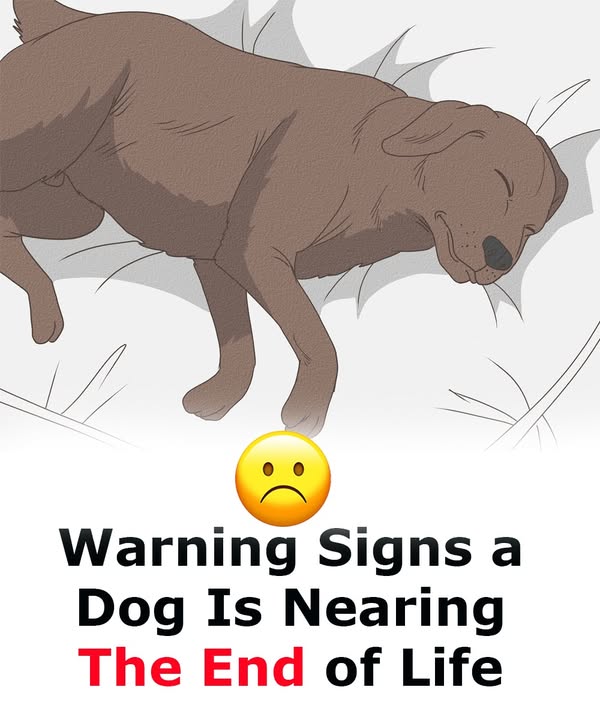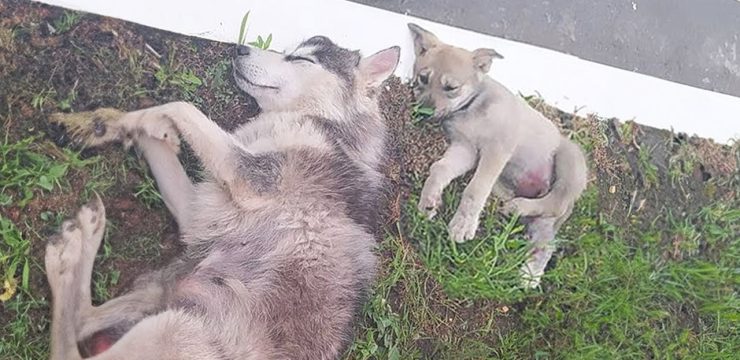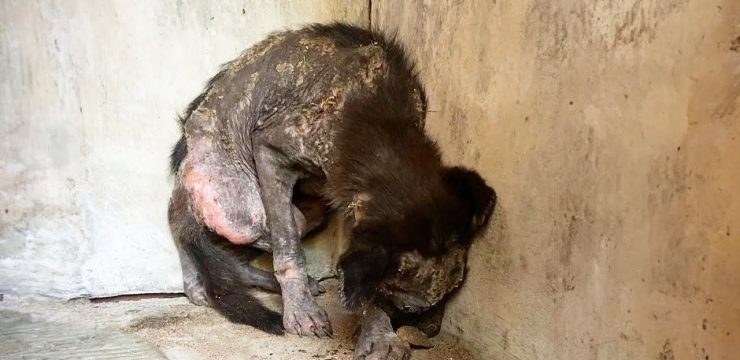Of all the bonds we form in life, the one we share with our dogs is among the most pure and heartfelt. They’re not just animals that live in our homes—they become our best friends, our loyal companions, and true members of the family. They greet us with wagging tails after a long day, stand by us in moments of joy and pain, and offer a kind of love that never fades. Unfortunately, as much as we wish they could stay by our side forever, the reality is that dogs have a far shorter time on earth than we do.

Watching a beloved dog grow old or fall ill is a painful experience that no pet owner ever truly feels prepared for. It brings with it a flood of emotions—grief, helplessness, and a deep desire to make sure their final days are filled with love and comfort. Being able to recognize when your dog may be nearing the end of their life can help you respond with compassion, making their last chapter as peaceful as possible. In this article, we’ll walk through the most telling signs that a dog may be approaching the end, while also offering guidance on how to support them during this sensitive time.
One of the earliest signs many owners notice is a steep decline in their dog’s energy. Dogs who once leapt for their leash or chased tennis balls with endless excitement might suddenly seem disinterested in the things they once loved. If your dog starts skipping walks, preferring to rest or sleep, it could mean their body is growing weaker, and their energy is fading.
Another sign to watch for is behavioral changes. Dogs nearing the end of life may act differently—some become more affectionate, seeking out constant closeness, while others retreat and prefer to be alone. You might notice your dog acting more anxious, confused, or even irritable. These emotional shifts can be symptoms of cognitive decline or simply a response to discomfort.
Physical changes can also be a clear indicator. Difficulty with basic bodily functions—such as trouble standing, controlling their bladder, or making it outside in time—can be signs of muscle weakness or failing organs. While occasional accidents happen with age, frequent issues should not be ignored. Likewise, a sudden or consistent loss of appetite is troubling. If your dog stops eating or drinking, it could point to serious internal problems. Without enough nutrients or fluids, dogs can quickly become weak or dehydrated, which only adds to their suffering.
Excessive fatigue is another major red flag. While senior dogs naturally slow down, extreme lethargy—sleeping through the day, failing to respond to familiar voices or noises, and lacking enthusiasm for anything—can mean their body is beginning to shut down. This is often one of the most difficult signs for owners to see, especially if their dog was once active and full of life.
Digestive issues, such as frequent vomiting or diarrhea, may also occur in a dog’s final days. Occasional stomach trouble isn’t unusual, but if it becomes regular or severe, it could be a symptom of organ failure, cancer, or another life-threatening condition. Changes in breathing are equally serious. Labored breathing, coughing, or noticeable shortness of breath can signal fluid buildup or heart issues. If you observe any changes in how your dog breathes, contact your vet immediately.
One subtle but significant detail to monitor is your dog’s gums. Healthy gums should be pink. If you notice they’ve turned pale, blue, or gray, it could suggest oxygen deprivation or circulatory issues, both of which are emergencies. Another alarming sign is the appearance of seizures or trembling. These episodes can be incredibly distressing and are often caused by neurological problems or toxins. Even a single seizure should prompt a visit to the veterinarian.
As dogs near the end, their appearance may change as well. Their fur may lose its luster, and you might notice new lumps, sores, or strange odors. These can result from infections, immune issues, or internal decline. Though not every change means the end is near, several appearing at once is cause for serious concern.
Emotionally, one of the hardest changes to witness is your dog losing interest in the things that once brought them joy. Whether it’s their favorite toy, a beloved treat, or even your voice, a lack of excitement or recognition can signal emotional withdrawal—a final, quiet goodbye.
As heartbreaking as it is, being aware of these signs allows you to prepare emotionally and practically. It gives you the chance to speak with a veterinarian, evaluate your dog’s comfort, and decide how to make their final days as meaningful as their life has been. This might mean arranging in-home hospice care, adjusting their routine to reduce stress, or simply lying beside them more often.
Above all, what matters most is showing your dog that they are loved—deeply, completely, and unconditionally. Their loyalty and companionship have made your life better in ways words can’t fully express. In their last moments, they deserve nothing less than your full heart. Whether it’s offering gentle touch, kind words, or simply sitting quietly together, your presence can be a powerful comfort.
If you’re facing this difficult time, know that you’re not alone. Every dog owner who has ever loved their pet deeply understands the ache of saying goodbye. But also know that by recognizing the signs and responding with love and care, you are giving your dog the greatest gift of all: a peaceful and dignified farewell. Their paw prints will stay on your heart long after they’re gone.
If your dog is showing any of these symptoms, please consult your vet as soon as possible. Their well-being should always come first.





